Home | Canadian Firsts in Sport | Canadian Innovation In Sport
Hockey
PreviousNext
Curved sticks. Innovation is central to sporting success but sometimes fortuitous moments that come from the unlikeliest of places lead to surprising developments, as in the case of the curved hockey stick.
Although the curved hockey stick is largely attributed to Bobby Hull, it was actually Stan Mikita who was responsible for an innovation that was to completely change the way hockey was played.
Mikita was known for both his fiery temper and his dislike of conventional hockey sticks and he would regularly lean on them to break them. One day he was so furious with his play in practice and the stick was so willowy it would not break so he rammed the stick in between a door and its frame to break it.
Instead of snapping, all that happened was the bottom blade significantly bent, but Mikita soon noticed how his shots with the newly-formed hockey stick had an unpredictable trajectory and this change gave him a huge advantage over the goalie.
Mikita and his Chicago Blackhawk teammate Bobby Hull requested more bent hockey sticks that became known as 'banana blades'. Together Mikita and Hull went onto become the most dangerous forward line of 1960's hockey. Indeed Hull became the first player to score more than 50 goals in one season in 1966 and led the League in goal scoring seven times during the 1960's.
Goalie masks. Sometimes innovation occurs through both accidents and sheer will together! On November 1, 1959, the Montreal Canadien's goaltender, Jacques Plante, in an NHL game against the New York Rangers was struck in the face by the puck. Plante wore masks in training but his coach, Toe Blake, refused him permission to wear one in a game in case it inhibited his vision.
Plante gave Blake an ultimatum; no mask, no play! And without a backup goalie Blake had to concede. Facing ridicule was no problem for Plante who compared not using the mask with a skydiver not using a parachute, and the mask soon became standard issue.
Goalie pads. Sometimes innovation occurs over time through a number of people all trying to do better and better; as in the case of goaltenders' pads. The first pads were actually borrowed from the English sport of cricket but by the 1930's they had become thicker and wider.
In the next decade, an extra roll of material called a skip-over roll was placed over the edge of the pad. This extra edge was gradually extended through the 1950's and by the 1980's extra padding was added to protect the insides of the legs and knees so that by the 1990's the pads were made from synthetic leathers and high-density foams. Finally, the 2000's saw the introduction of 'box' style or square pads to maximize the blocking area for the goalie as the goaltending style of play changed to a blocking action.
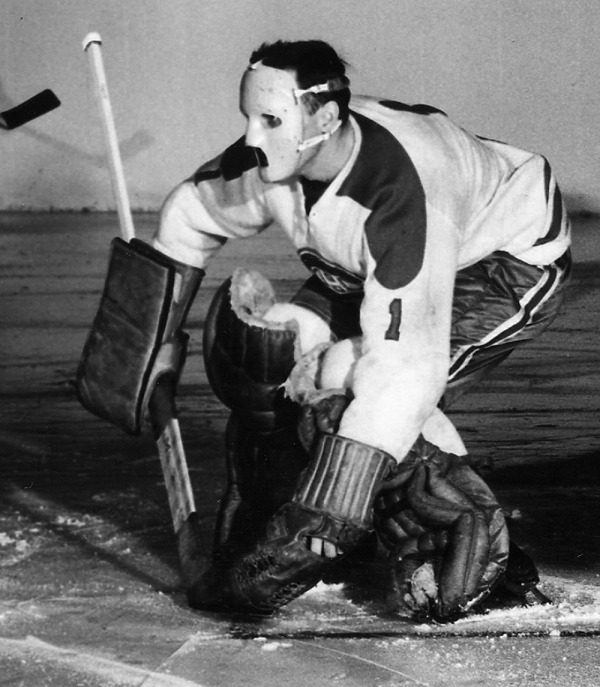
Jacques Plante of the Montreal Canadiens was the first goalie to wear a mask during an NHL game.
Collection: THE CANADIAN PRESS/ Alexandra
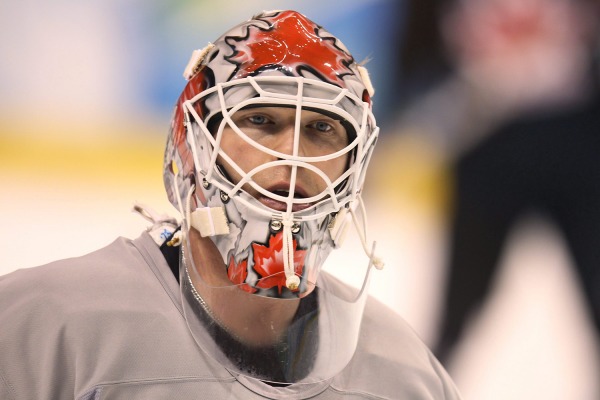
Martin Brodeur's mask when he played for Team Canada at the 2010 Olympic Winter Games in Vancouver had a patriotic theme.
Collection: THE CANADIAN PRESS/Jonathan Hayward
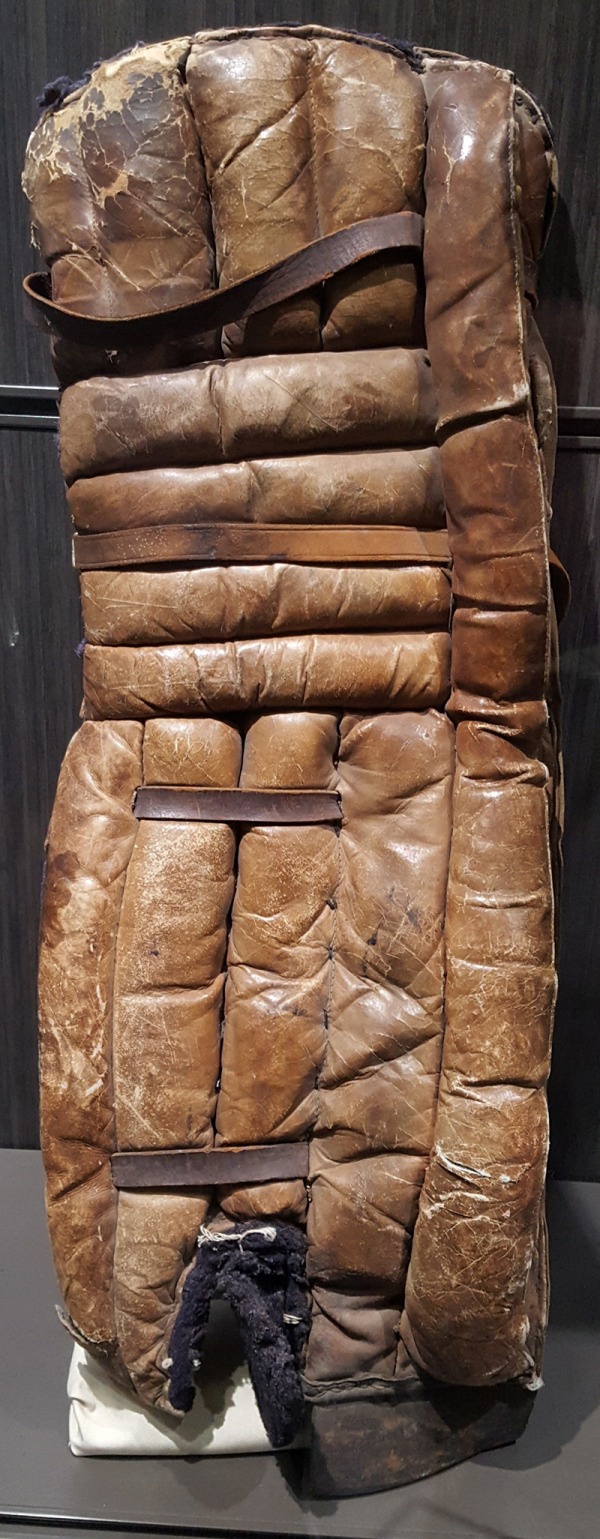
Emil "Pop" Kenesky is credited with the innovation of a new and better goalie pad in 1924 made of leather with horsehair stuffing. He was known to add a rabbit foot for luck upon the request of the goalie.
Collection: Collections Canada's Sports Hall of Fame
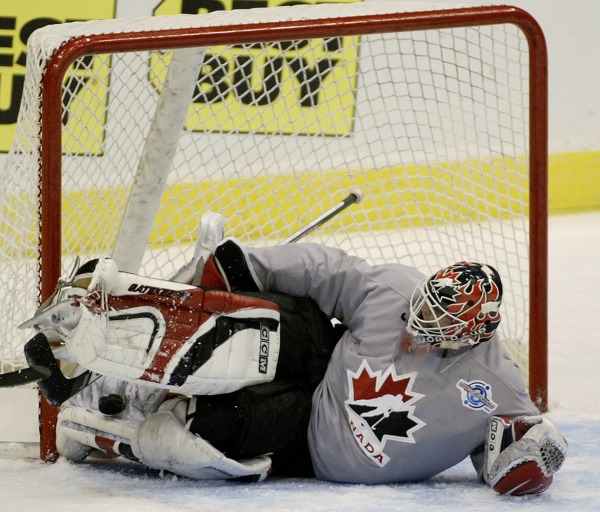
Goalie Martin Brodeur made good use of his modern box style pads to block shots on goal.
Collection: The Canadian Press/ J.P. Morzulski
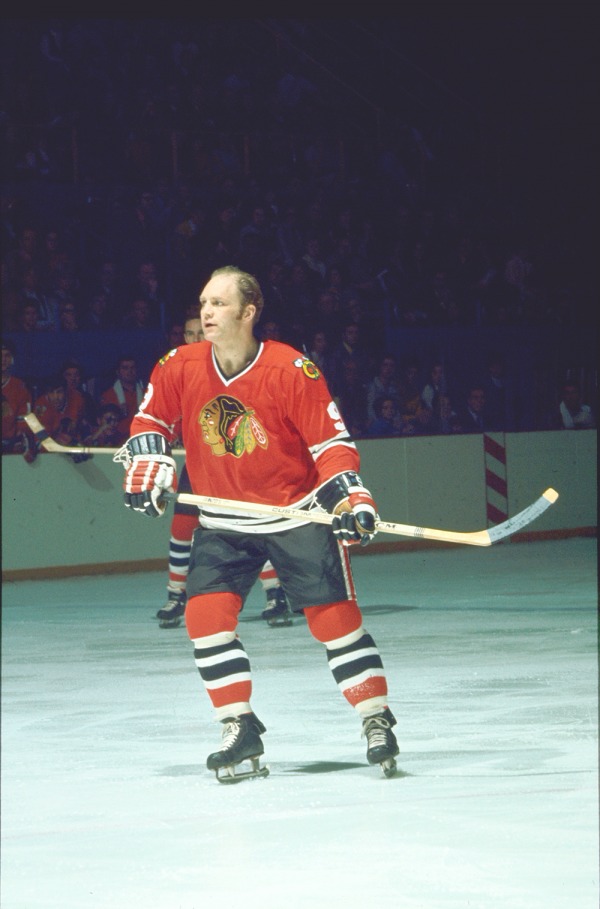
Bobby Hull started using a curved blade hockey stick in the 1960's and found that the curved blade led to a stronger shot and unpredictable puck movement, which made it difficult to stop. Hull perfected the "banana blade" and the blade curving rule commonly referred to as the Bobby Hull Rule.
Collection: Hockey Hall of Fame
Previous Next


